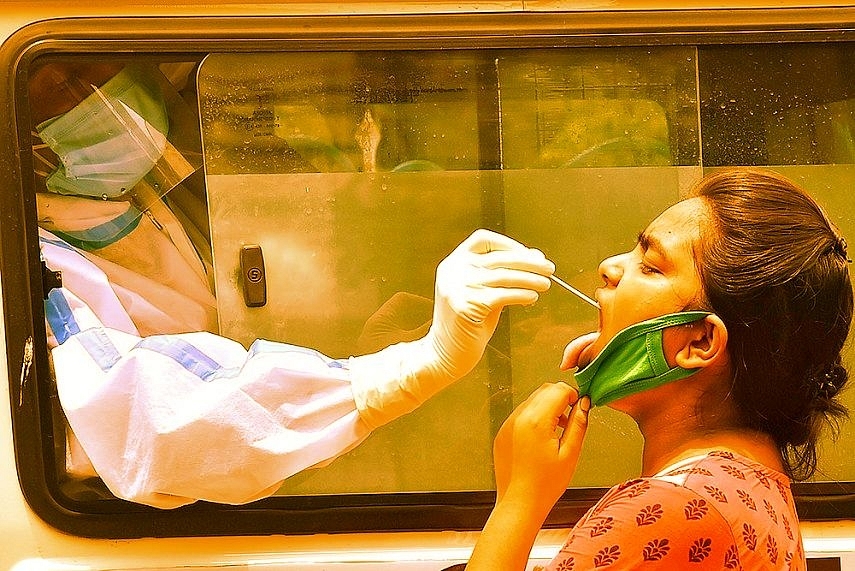Insta
First National Serosurvey: For Every Covid-19 Positive Detected By May, India Likely Missed 82-130 Infections

A health worker collects swab sample for Covid-19 test.
The findings of the first round of a national serosurvey, conducted to measure the extent of SARS-CoV-2 infection among adult population of India (18-45 years old), are out. Carried out between 11 May to 4 June by the Indian Council of Medical Research (ICMR), the study estimates a cumulative 6,468,388 adult infections by the early May.
The community-based survey was conducted in 700 villages/wards of 70 districts of the 21 States of India. The districts were selected based on the incidence of reported COVID-19 cases and divided into four strata ( districts with zero cases, low incidence, medium incidence and high incidence).
Four hundred adults per district were enrolled from 10 clusters with one adult per household. Serum samples were tested for IgG antibodies using COVID Kavach ELISA kit. Then all the positive serum samples were re-tested using Euroimmun SARS-CoV-2 ELISA.
The sequential use of COVID Kavach and Euroimmun ELISA reduced the potential for false positive by reducing sensitivity and increasing specificity. Given that infections were low in May, testing with greater specificity was necessary to minimise the large number of false positives.
The survey enrolled a total of 30,283 households and 28,000 individuals and found that the population-weighted seroprevalence after adjusting for test performance was 0.73 per cent in India in May.
“The findings of our survey indicated that the overall seroprevalence in India was low, with less than one per cent of the adult population exposed to SARS-CoV-2 by mid May 2020,” the study says.
Since the overall adjusted seroprevalence has been estimated to be 0.73 per cent while the reported number of COVID-19 cases were very low in comparison, it follows that for every RT-qPCR confirmed case of COVID-19 in early May, we couldn’t detect 82-130 infections in India. “The high infection to case ratio in India could be on account of the prioritization of testing among symptomatics or the variability in testing rates across the States,” the study says.
The study is cognisant of some limitations of the survey and admits that the “seroprevalence could be as low as 0.26 per cent” which it terms the worst case scenario of error in serological testing but this doesn’t change the conclusion of the study that the spread of SARS-CoV-2 was limited in early May in India.
The ICMR study recommends further national and local serosurveys are to better inform the public health strategy for containment and mitigation of the epidemic in various parts of the country.
Introducing ElectionsHQ + 50 Ground Reports Project
The 2024 elections might seem easy to guess, but there are some important questions that shouldn't be missed.
Do freebies still sway voters? Do people prioritise infrastructure when voting? How will Punjab vote?
The answers to these questions provide great insights into where we, as a country, are headed in the years to come.
Swarajya is starting a project with an aim to do 50 solid ground stories and a smart commentary service on WhatsApp, a one-of-a-kind. We'd love your support during this election season.
Click below to contribute.
Latest